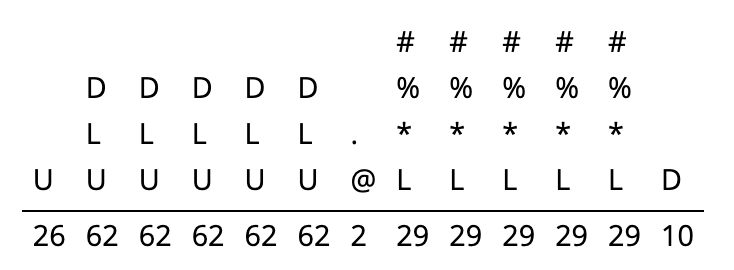2.1: Strings- A First Look
( \newcommand{\kernel}{\mathrm{null}\,}\)
Let
There are a number of alternatives for the notation and terminology associated with strings. First, the characters in a string
Alternatively, strings are called words, the set
In many computing languages, strings are called arrays. Also, when the character
In the state of Georgia, license plates consist of four digits followed by a space followed by three capital letters. The first digit cannot be a 0. How many license plates are possible?
- Solution
-
Let
so the number of different license plates is
In the case that
A machine instruction in a 32-bit operating system is just a bit string of length 32. Thus, there are 2 options for each of 32 positions to fill, making the number of such strings
Suppose that a website allows its users to pick their own usernames for accounts, but imposes some restrictions. The first character must be an upper-case letter in the English alphabet. The second through sixth characters can be letters (both upper-case and lower-case allowed) in the English alphabet or decimal digits (0–9). The seventh position must be ‘@’ or ‘.’. The eighth through twelfth positions allow lower-case English letters, ‘*’, ‘%’, and ‘#’. The thirteenth position must be a digit. How many users can the website accept registrations from?
- Solution
-
We can visualize the options by thinking of the 13 positions in the string as blanks that need to be filled in and putting the options for that blank above. In Figure 2.4, we've used U to denote the set of upper-case letters, L for the set of lower-case letters, and D for the set of digits.

Figure 2.4: String Template Below each position in the string, we've written the number of options for that position. (For example, there are 62 options for the second position, since there are 52 letters once both cases are accounted for and 10 digits. We then multiply these possibilities together, since each choice is independent of the others. Therefore, we have
total possible usernames.


